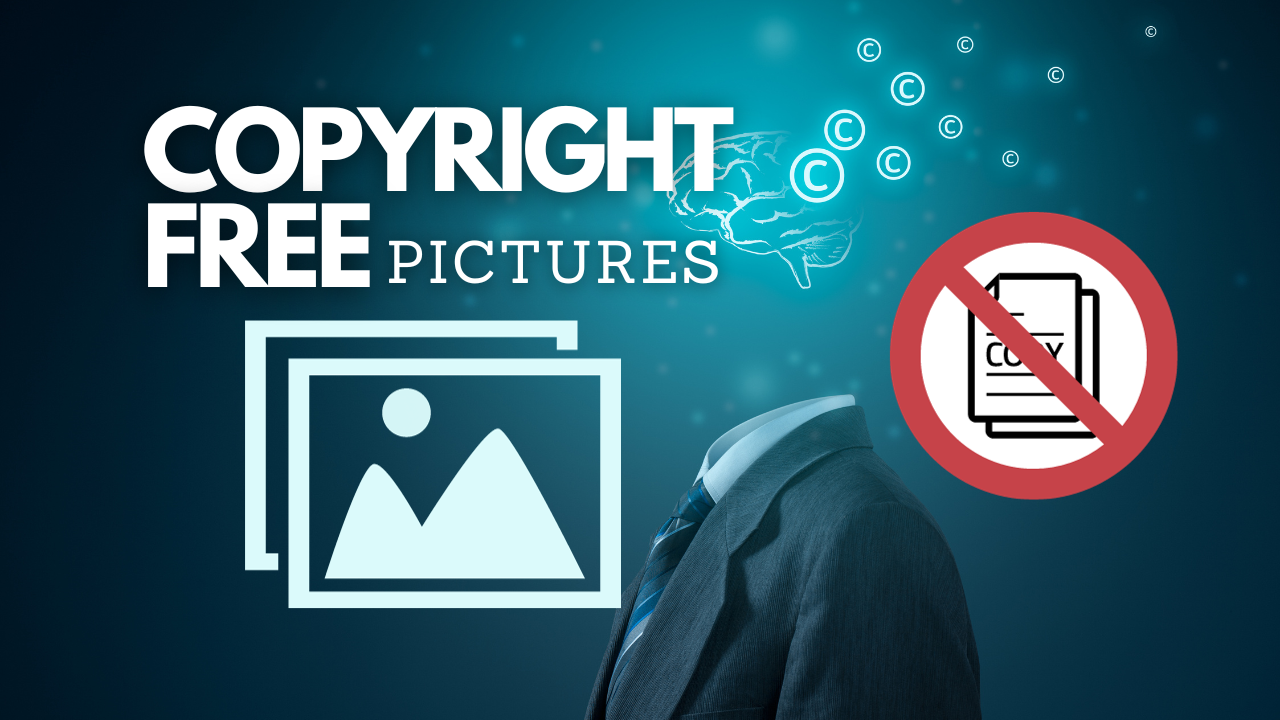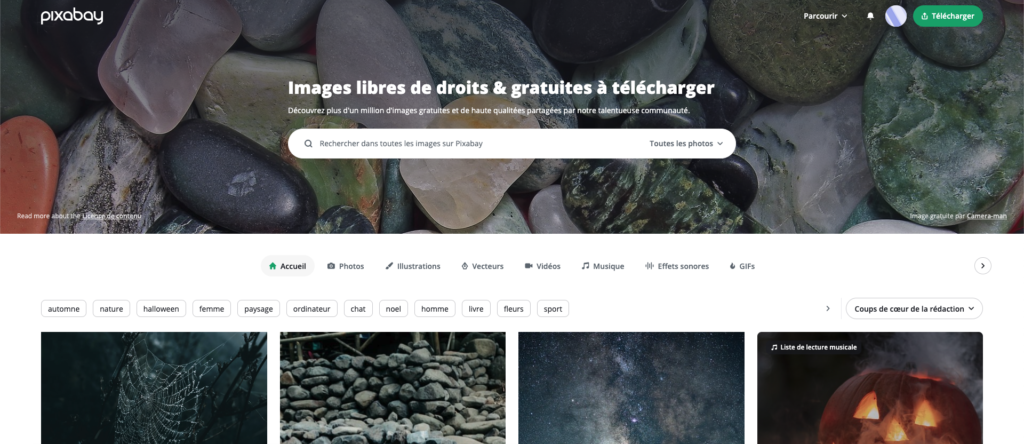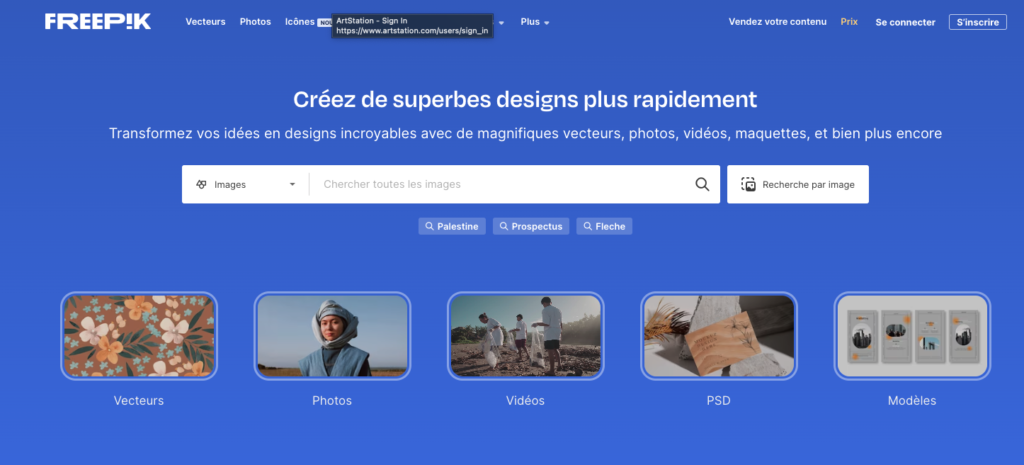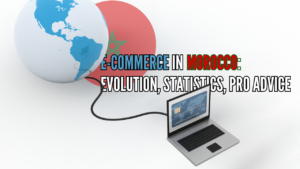
A free, royalty-free image: a great opportunity to leverage in a web marketing strategy. Nowadays, a photo plays a crucial role in a commercial company’s communication efforts, whether it’s for illustrating a product page, enhancing the readability of a blog post, aiding in tutorial comprehension, or capturing attention on social media. “A picture is worth a thousand words,” and it seems that the web truly brings this age-old expression, dating back over 2,500 years, to life. However, this quest often demands time and money. The good news is that high-quality, free image banks are available online!
How do I know if an image is copyright free?
Before delving into the search for free images, it’s essential to understand what this concept entails. Can a beautiful free image be used for any purpose? Is it necessarily royalty-free? And, first and foremost, how can one determine if an image is royalty-free?
Royalty-free photos are not necessarily free…
Free images are not necessarily royalty-free. The concept of royalty-free images differs from that of free images. Royalty-free images and photos can be used without a time limit, but within the framework defined by the previously acquired usage license. The user is allowed to use the illustration according to the conditions specified in the license. This could be a license that permits only the reproduction of the image for non-commercial purposes, or it could be an extended license allowing, for example, the printing of the photo on derivative products. In any case, the terms and conditions are explicitly specified.
Note that intellectual property rights and image rights in France provide extensive protection for the authors and subjects of a photograph by requiring their prior consent for any use of their work. While a royalty-free photo is not necessarily free, a free and royalty-free image does exist. Nonetheless, it is still protected by copyright and image rights under a “Creative Commons” license.
These free Creative Commons licenses allow for various uses, including:
- CC0 (Creative Commons Zero): Free images can be used without any restrictions.
- CC BY: Royalty-free photos must attribute the author’s identity.
- CC BY NC (non-commercial): Any commercial use requires the author’s approval.
- CC BY ND (no derivative work): When used publicly, the user cannot retouch, transform, or use the royalty-free image in a collage.
When downloading a free royalty-free image, it’s essential to check the type of Creative Commons license attached.
Google image: royalty free or not?
Is downloading a freely accessible photo from Google Images allowed for unrestricted use? Many illustrations are visible on the web, raising questions about their usage. In practice, any visual content, be it a photo, image, or drawing, is protected by copyright. To use a royalty-free image found on Google Images, it is necessary, in principle, to request permission from the author to determine:
- Whether the author grants free or paid usage rights.
- What type of license the author grants.
However, thanks to the “Tools” tab, Google Images allows users to filter results by license type – under the “Usage Rights” tab – to select only those photos that can be reused for the specific purposes of the user.
How can one determine if an image is royalty-free, whether it’s free or paid, and which type of license applies to it? These are all challenges that hinder quick and easy use of illustrations in the context of content creation for an effective and cost-efficient inbound marketing strategy. Fortunately, the library of free royalty-free images comes to the rescue of the top marketing directors.
Free royalty-free image bank: an essential tool for publishing a blog
To find free royalty-free photos, head to the web. Dedicated websites provide access to various types of visual content: royalty-free clipart images, royalty-free drawings, free vector images, royalty-free logos, or even royalty-free illustrations. You have every chance of finding the visual content that suits your web content, provided you choose the right royalty-free image library. Here is a list of the best image banks where you can find free royalty-free photos.
Adobe Stock
Formerly Fotolia, this renowned royalty-free image bank operates on a credit-based system: users purchase credits, which they can then use to obtain a license for their chosen royalty-free photos. Advantages of Adobe Stock image bank include an extensive selection and exceptional quality. The downside is that Adobe Stock primarily offers paid photos. Tip: consider subscribing to an Adobe Stock plan.
By taking advantage of this offer, the user can test the image bank for free for one month, during which they can select 10 free files.
Pixabay

A leading free image bank, Pixabay offers only free royalty-free photos – nearly 400,000 of them, providing a vast selection of illustrations to suit your editorial needs. What’s even better is that all the images available for download are under the Creative Commons Zero license, allowing users to use them freely. Advantages include an easily accessible site to quickly find free royalty-free images for commercial use. The advanced search engine at the top of the page is intuitive and efficient, allowing users to filter files by type, orientation (portrait or landscape), category, size, and dominant colors.
Unsplash
This royalty-free image bank also offers only free images under the CC0 license. Advantages include the fact that all photos on Unsplash can be used freely, whether for commercial or non-commercial purposes. There is also the option to search for photos by colors or format. One drawback is that Unsplash provides only photos and does not offer vector files.
Pexels
Free royalty-free images, CC0 license allowing for commercial use and file modification, a multi-criteria search engine, a wide selection of images across various types and categories… Pexels combines all the advantages of a great free photo bank!
Google images
The most extensive free royalty-free image bank… as long as you carefully check the type of Creative Commons license in effect. Opting for a free Google Images photo is perhaps the most obvious choice when searching for visuals. However, be sure to select the “reuse and modification allowed” usage rights to avoid potentially infringing on copyright.
Bajstock, Pickit, Iso Republic, and even Flickr, among many other free image banks, are worth exploring to find the perfect royalty-free photo that will best illustrate your tutorial, blog post, or product listing on your website.
There’s even a tool that can instantly scan all the photos available on the web: Everypixel. This allows you to narrow your search down to a selection of exclusively free images.
On the results page, the user is presented with a multitude of files from which they can select their desired royalty-free image. By clicking on it, they are redirected to the various websites that offer it for free, and from there, they can download these free images with complete freedom!
Finding your free photos: the example of Freepik

In the context of your marketing content creation, using free royalty-free images is always a must. But how do you go about searching on the free image bank of your choice? Let’s take a closer look at how to search for free downloadable images, using the example of the free royalty-free image bank, Freepik.
Freepik, for all your free royalty-free images.
When searching for a royalty-free photo, you can visit the Freepik website. This image bank is among the best and most reputable. The library not only includes photos but also royalty-free illustrations and, most importantly, vector files. These .ai or .eps documents, well-known to graphic designers and creatives, allow you to create your own logo for a 100% personalized, unique visual that is automatically protected by copyright. By downloading one or more free vector images from Freepik, experienced users have the opportunity to create a multitude of their own royalty-free images… that belong exclusively to them. With around 1.5 million vectors, PSD files, and free royalty-free image files, you have a wealth of options to illustrate infographics, visual identities, presentations, or press kits.
Find a free royalty-free image, instructions for use
Freepik and its search engine resemble most of the best free royalty-free image websites. To find the most suitable photo for your editorial content, the process is simple:
1- Enter the subject of the image you’re looking for. For example, if you’re searching for a royalty-free zen image, type “zen,” or for a Christmas image, type “noel” or “christmas” in the search bar. The search engine typically provides very helpful suggestions to refine your search.
2. Filter search results. Royalty free photo, vector, PSD or icon, simply check the box corresponding to the search.
Please note: some sites also allow you to find a free royalty-free video file.
3- Select the image of your choice. Once the file is chosen, and before downloading it, it’s crucial to verify the type of license associated with it. As a reminder, only the Creative Commons Zero (CC0) license allows you to obtain a free royalty-free image for commercial use in illustrating your company’s editorial content.
Regarding the quality of the file: most websites offer various download sizes based on the user’s commercial needs. For example, a logo inserted in a small size at the bottom of a page does not require the same level of quality as the main homepage photo. In any case, each royalty-free HD image should have sufficient quality – and therefore size – to appear sharp. The choice of HD quality can be made at the time of image selection.
4- Download the file. The user then has a free royalty-free image to use within the terms of their license: the CC0 license permits all uses, for personal or commercial purposes, with the ability to modify the file or include it in a montage, and there’s no time limit.
Note: Just like images downloaded from dedicated websites, editorial content such as blog articles, product listings, presentations, tutorials, etc., remains the exclusive property of their author. By creating content that includes images, the publisher is protected against any unauthorized use of said content by a third party.





